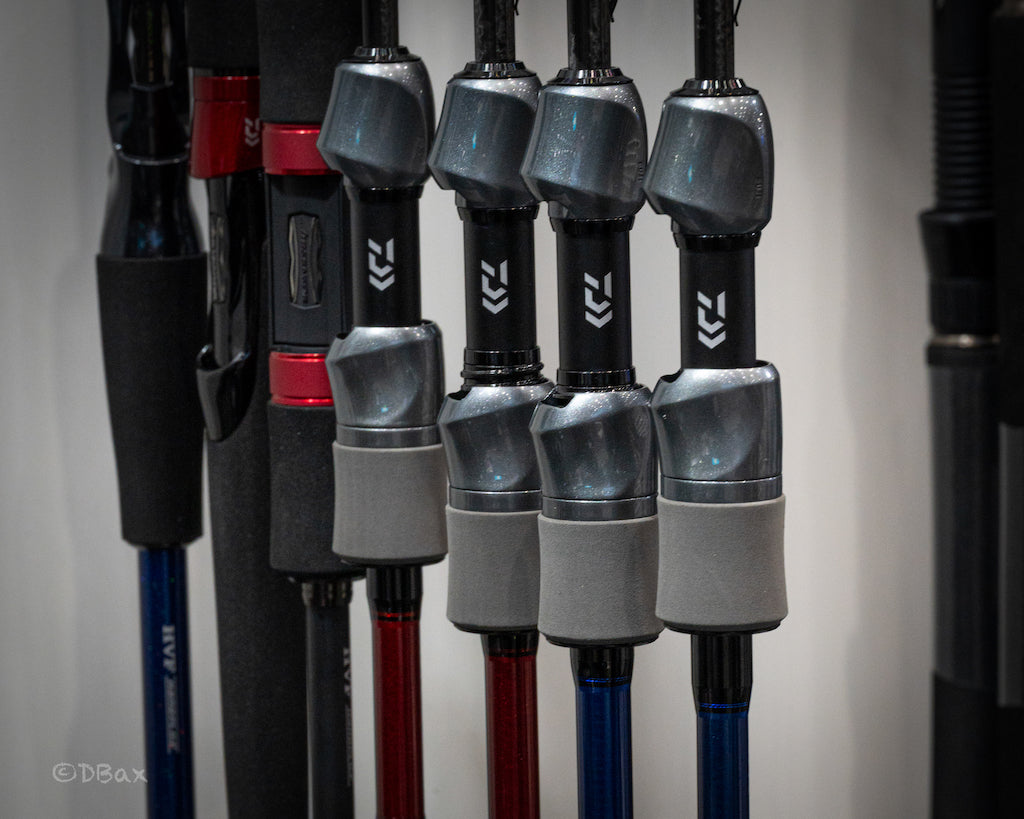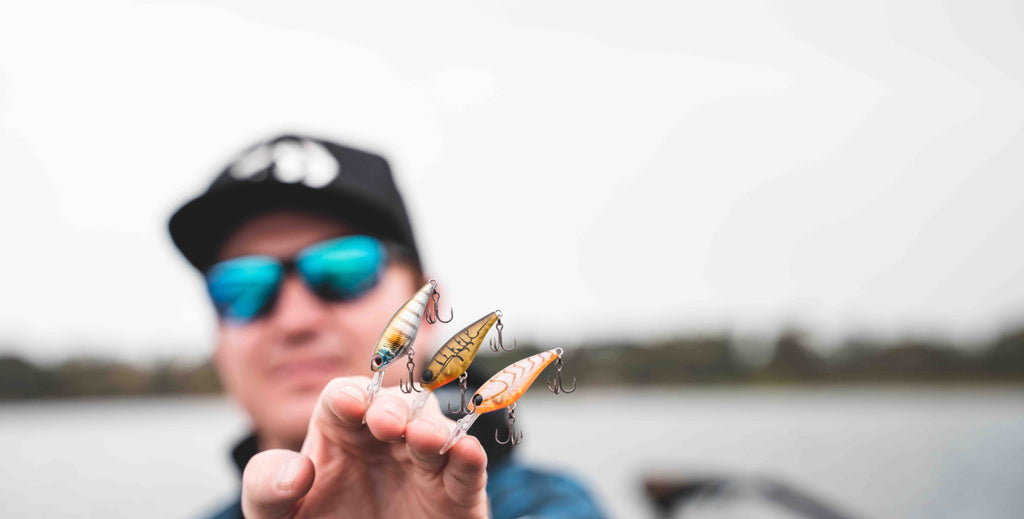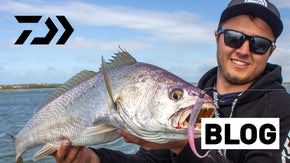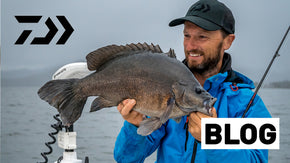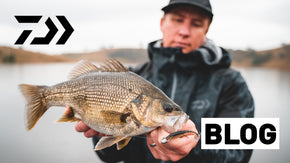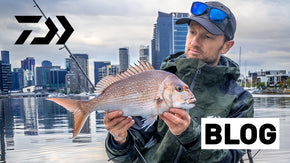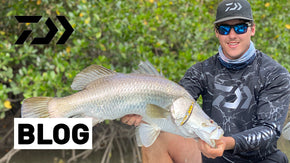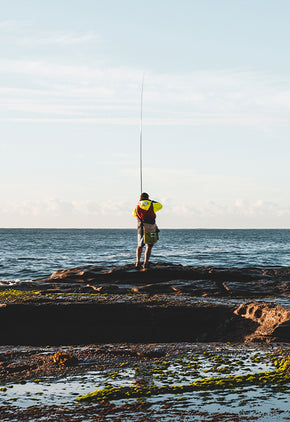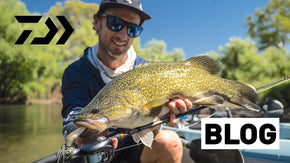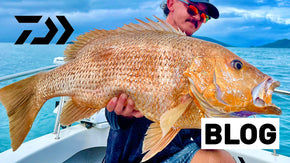Posted 17th November 2023
How to Catch Creek Trout on Soft Plastics

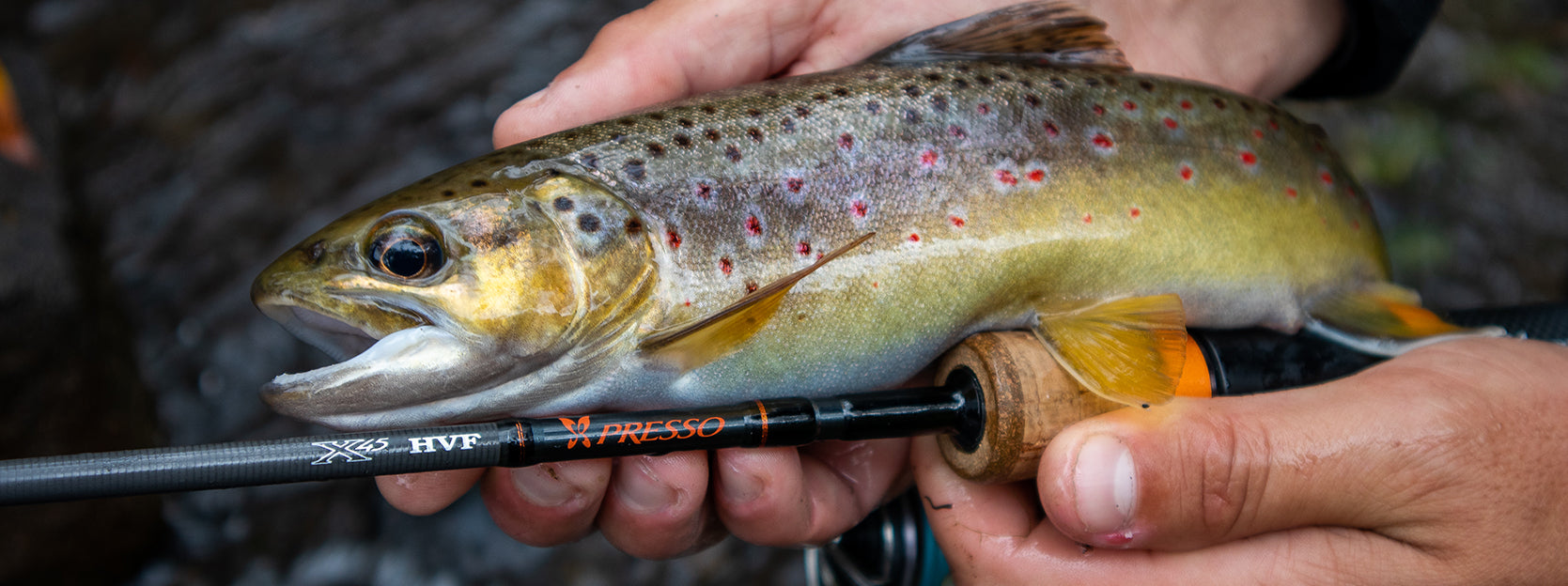
By Joshua Bland
As the air begins to cool and the leaves begin to change, fishing in the southern state of South Australia starts to shift. For two closely related and highly prized species, the brown and rainbow trout, this change is a reminder of their European origins and gets them hungry for an upcoming spawn. The secretive nature of trout fishing in SA is no secret. Have a quick Google search or a scroll through the dedicated Facebook pages and you’ll discover some seriously tight lips. This is due to a combination of not only the scarcity of spots but distrust, as many anglers have ruined pristine trout water with poor practices. So, if you are looking to target creek trout, please respect these beautiful fish as well as the landowners of which these tiny creeks often navigate. Positive relationships between the fishing community and the public are incredibly important and do a world of good for this sport we love.

Plastics vs. Hardbodies
For years the shallow-running hardbodies have been the king of creek trout with the Daiwa Presso Minnow 60F and the now discontinued Daiwa Dr Minnows wearing the crowns. But one technique that is often overlooked and is as equally effective is the use of soft plastics. Plastics are a staple in my trout fishing kit as they have several advantages over hardbodies. Firstly, they are cheap. In these creeks lined with dense and often prickly vegetation, it is so easy to send out a misplaced cast and when you find your lure caught out of reach (believe me it happens) it will sting a little less. Secondly, trout can be incredibly acrobatic, launching out of the water to throw your hooks. In my experience, I have dropped fewer fish using soft plastics, thanks to the single hook, than I have using trebled lures. Finally, you can easily control both lure presence (more on this under Jighead Selection) and the prey you are attempting to imitate. The prey found in these streams range from small native fish to insect larvae, and two plastics in the Bait Junkie range, the 2.5” Minnow and the Risky Critter are perfect for imitating these natural food sources.
Gear Selection
Specialised kit pays dividends for what can otherwise be a very frustrating form of fishing. Rod length is paramount for being a smooth operator in these hidden streams. For years I battled the trees, rushes, and brambles with 7’-7’2” rods and whilst they caught me fish, they also skyrocketed my blood pressure on many occasions due to the lack of space in this arena (Image 1). Fortunately, those days are over and the 22 Presso spin range has provided us with the perfect rods for creek trout (Image 2). Joshua Davey (@joshsfishingobsession) and I have taken a liking to the 5’6” models which happen to be the shortest in the range. The fewer inches proving bigger isn’t always better by providing complete control and manoeuvrability in the thick understory. This length rod comes in two models – the 562ULRS which I would treat as a 60% hardbody and 40% soft plastics rod, and the 562LFS which is a faster, 40% hardbody and 60% soft plastics rod. Pick based on which technique you do most of the time.
Pair the rod with the lightest and smoothest reel you can get, spool it with 6lb J-Braid Grand plus 1½ – 2 rod lengths of 4-5lb X-Link leader and you’re set. I would recommend starting at the 21 Freams FC LT or 21 Caldia MQ in a 2000 size if your budget allows. The Mag Seal technology is invaluable for when, not if, you take it for a swim by either dropping it or slipping and falling into the water. I’ve done both…more than once.

Jighead Selection
Jig heads offer us a great deal of control over the lure and are an integral piece to the soft plastic puzzle. Jig heads control several important variables of lure presence – sink rate, retrieval speed, positioning, as well as the splash on impact. It is important to consider the factors at play when making your selection. Because these creeks are on average 10-40cm deep I rarely use a jig head heavier than a 1/20th. These lighter jig head weights allow you to skip-cast into tight spots and under the trees. The 1/30th is excellent for this and is the go-to weight for timid fish as it creates less splash on impact and allows for a more subtle retrieve. As for hook sizes, between 4 and 1 are ideal, keeping in mind larger hooks do more damage to the fish. Opt for a light gauge for the same reason, the Saq-Sascoating on the Bait Junkie Finesse Jigheads are crucial for pinning fish and limits damage. For the safest catch-and-release practice, flatten the barbs.
2.5 MINNOW
The Minnow aims to imitate the native galaxias which are sometimes found in these waterways. In ultra-shallow or slower water, I opt for a 1/30th as for deeper and/or faster water I use a 1/20th. Colour isn’t crucial as they will often hit most things flying past their face, but even so, my current favourites are pearl trout and mossy. Both are natural baitfish colours with a bit of iridescent shine.
The technique is simple, cast upstream into the flow and slowly roll the plastic so that the tail is kicking over. Position your retrieve so that the lure swims through the main flows and past breaks in current (large rocks or fallen timber). When approaching slower pools, trout often position at the top or bottom. Make sure to cast at these spots before approaching. On days when trout follow but don’t commit, increase the speed of the retrieve. Sometimes this flicks their brain into “bite now think later” mode.
RISKY CRITTER
The Risky Critter on the other hand is a wild card. This bait imitates the two most abundant food sources in these creeks – crustaceans (shrimp & yabbies) and insect larvae (caddis, stonefly, & dragonfly). Where the minnow is your fast-paced bait to cover water, the critter is more finesse. I predominantly rig this on a 1/30th jig head and trim the plastic to the second set of legs just rear of the Daiwa logo. This makes it more digestible for the smaller size class these creeks hold.
Colour choice is more important for the critter as many times the fish will follow the lure to your feet and not commit. It pays to have a selection of bright (e.g., yabby) and natural colours (e.g., mudblood) to gauge the mood of the fish. My favourite is GP chartreuse as it incorporates both, having a bold belly but maintaining a natural backing (Image 4). It also happens to mimic egg-bound shrimp. After rains, these creeks get silted up and the strong orange of yabby does wonders to stand out in the resulting chocolate milk water.
The critter is best for targeting pools and structure which are often dispersed between rapids. Like the minnow, focus on the top and bottom of the pool but this time work it slowly with small twitches followed by a pause. In high flow, forget the pauses and stay in contact with the lure, let the current do the work. It is also fantastic for fishing under fallen trees and bridges. In these cases, I position the rod above the structure or hole and simply jig the lure. It's surprising how effective this stupidly simple technique is on stubborn trout.
Utilising soft plastics for creek trout has been an incredibly addictive form of fishing and has yielded lots of success in what is often a challenging environment. Of course, whilst my stomping grounds are in SA, I have applied these techniques successfully in other southern states of Australia. So, if it’s been a while since you last used plastics or you’re just starting with targeting creek trout, consider take some Bait Junkie plastics and jigheads. They love em’.


 Contact Us
Contact Us Blog
Blog About
About
